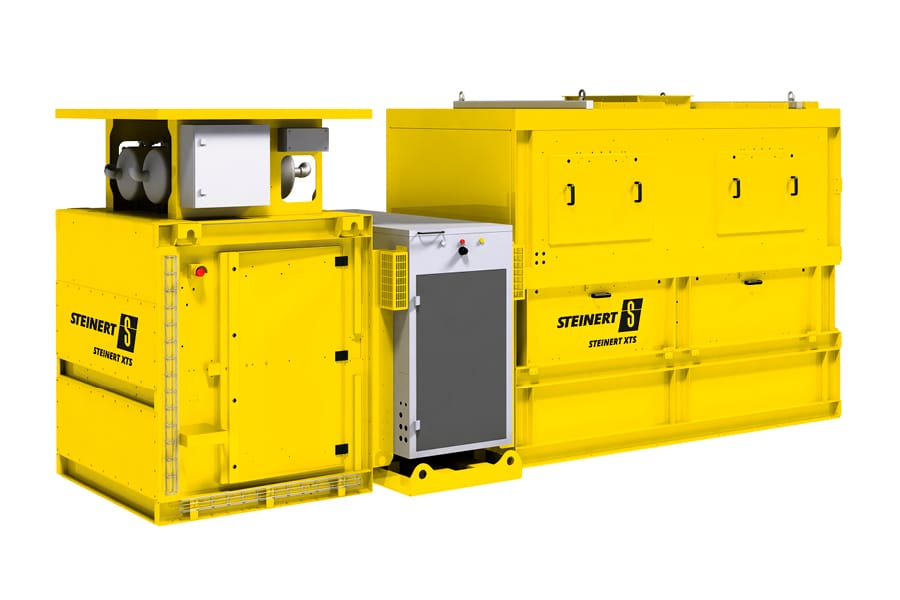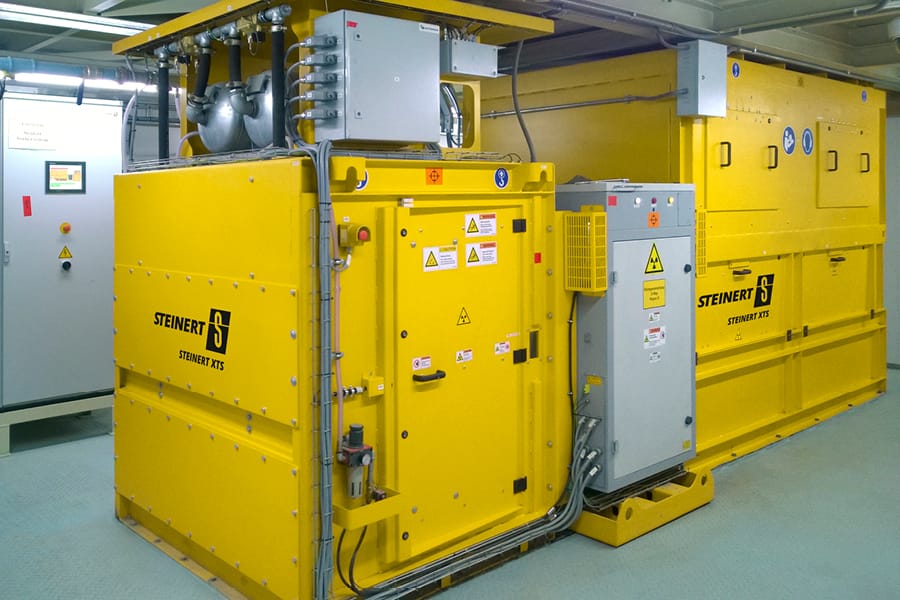
STEINERT XTS
Resilient and efficient: the STEINERT XTS sorts gemstones and diamonds
Special stones such as diamonds require special designs: the STEINERT XTS
The STEINERT XTS x-ray sorting system is used for dry density sorting in the lower grain size range. This sorter is based on our proven STEINERT XSS T EVO 5.0 sorting system, but offers special modifications particularly coordinated to the sorting of very valuable goods like diamonds. A transmissive procedure detects material-dependent differences in the absorption of x-rays then classifies and uses them for sorting into density classes.
The extent of absorption of x-rays depends both on the material density and on the thickness or the radiated path of an object. The larger the atomic mass and the thicker a material part, the more radiation will be absorbed. The absorption in the material to be sorted is measured at two different energy levels to compensate for the influence of the object thickness.
The so-called dual-energy procedure uses software to determine the material-specific absorption and thus conclude the density of the material. Radiation passing through the objects enables both a conclusion as to the medium density of an object and the identification of inclusions in rocks or clumps of material. The main advantage of x-ray transmission is that transmissive detection makes the system insensitive to surface soiling and enables the detection of inclusions. Radiation passing through the objects enables a conclusion as to the medium density of an object and thus the differentiation of stones, such as diamonds from kimberlite or alluvial sediments.
A vibration conveyor is used to carry the sortable material on an acceleration belt, which breaks the supply flow down in the supply direction thus achieving material separation. The feed material is transported through the scanner area in a resting position on the conveyor belt, whereby the x-ray source is positioned below the conveyor belt and radiates a narrow area of it. The proportion of radiation not absorbed by the material is measured by detectors in the beam above the conveyor belt. The variation between initial and measured radiation can be used to reveal differences in density between or within individual objects. Each individual object is subsequently classified according to application-related criteria. Should the decision to sort be positive, the relevant object is deflected from the discharge parabola using a short, targeted blast of compressed air. Since this machine is conceived for use in the fine grain range from 4 to 100 mm, the discharge is realised using a blast of compressed air via a downward-pointing valve manifold. The system has a valve manifold with double the number of valves and a correspondingly higher resolution for use in fines.
Resilience and high availability characterise our well-balanced scanner unit, which as a closed system has an internal cooling circuit. The high service life of the x-ray source means you benefit from the comparatively low maintenance costs for this sorting system.
Your benefits:
- XTS = x-ray transmissions system
- Fine grain range 4 – 100 mm
- Maximum diamond detection at low over-sorting
- Working width: 1 m






